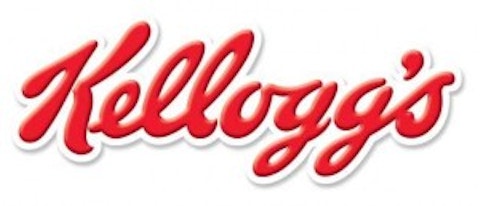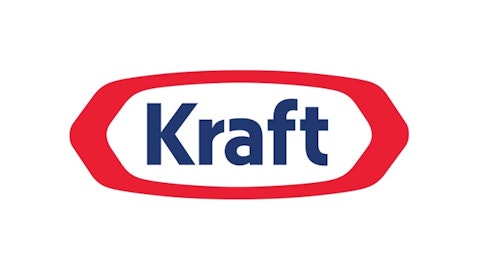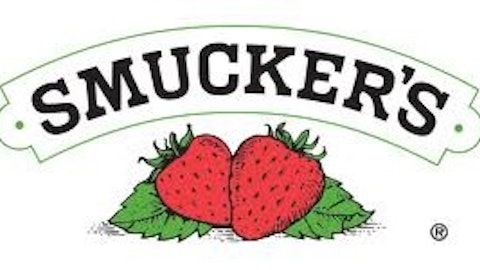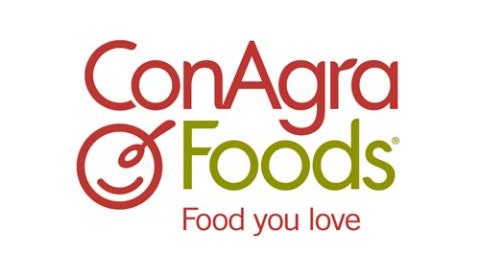Kellogg Company (NYSE:K) is the biggest cereal producer in the world, and it’s second in cookies and crackers. Based on these simple facts alone, Kellogg should be a safe long-term investment. However, that doesn’t mean it’s the best option compared to peers.
Geographical breakdown
Kellogg Company (NYSE:K)’s net sales increased 7% in the second quarter year-over-year, strongly aided by Pringles (acquired last year). However, internal net sales declined 0.5%. The company has seen weakness in U.S. morning foods, U.S. snacks, and Europe more broadly, but experienced strength in Latin America, Asia-Pacific, India, and South Africa.

This is a common trend for companies throughout many industries. Europe has taken the austerity route, which reduces demand, and the United States is seeing lower wage growth and higher taxes, which negatively impacts the consumer. In regards to the latter, some investors are worried that consumers will switch to cheaper generic brands. While this is already a factor, it’s not likely to pick up significant momentum.
People who have eaten Special K, Raisin Bran, Frosted Flakes, and other popular Kellogg Company (NYSE:K) brands throughout their lives aren’t likely to switch. These aren’t big-ticket items. Therefore, consumers should still be capable of paying up a dollar or two and remain loyal to their favorite brands — for the most part. By the way, consumption for the three aforementioned cereal brands has increased. However, other cereal brands are facing challenging times.
Latin America, Asia-Pacific, India, and South Africa have all seen strong economic growth in recent years. However, China’s waning demand for commodities is a concern in regards to the sustainability of that economic growth, and India might be on the verge of a currency crisis. These events have the potential to impact Kellogg Company (NYSE:K)’s opportunity in these countries.
Category breakdown
Kellogg Company (NYSE:K)’s second-quarter operating profit jumped 10% year-over-year, with the internal operating profit increasing 3%, which the company has attributed to cost discipline, brand building, and good timing.
Beverage consumption has increased thanks to expanded distribution; toaster pastry demand is strong; and health and wellness bars are holding their own.
U.S. snack sales dropped 3% in the quarter, mostly due to unfavorable pricing. Cookies have especially been weak, but Kellogg is focused on innovation and promotion to help drive growth in this area. Cereal bars have seen strong demand thanks to Special K Pastry Crisps and Nutri-Grain Fruit Crunch.
U.S. specialty, North America frozen, and Asia-Pacific net sales increased 2%, 4%, and 4%, respectively. All three areas saw increased volume, but only the North America frozen segment saw favorable pricing. Kellogg has been strong in the United States in this area thanks to brand building, but its presence in Canada has weakened due to increased competition.
Latin American net sales also increased 5%, but volumes declined, which was offset by improved pricing. European net sales dropped less than 1%, and improved pricing wasn’t enough to offset declining volumes.
Overall, Kellogg has pointed to significant inflation in the first half of the year as a hindrance, but sales growth and cost containment has allowed the company to continue to perform well. And Kellogg believes that the biggest impact from inflation has already been felt. Therefore, profits are likely to improve in the second half of the year.
Related options
Kellogg is often looked to as a defensive play and it should be viewed as such, especially considering the stock only dropped approximately 35% at the height of the Great Recession (most stocks plummeted well over 50%). However, one related stock held up even better at the time, and it might have more going for it at the moment.
General Mills, Inc. (NYSE:GIS) offers 45 brands to consumers, including Wheaties, Cheerios, Betty Crocker, Chex, Fiber One, and Pillsbury. As you can see, several of its brands are household names. General Mills has also had to deal with declining volumes in some areas, but that has been made up for with increased pricing. Of course, if the consumer continues to weaken, then increased pricing won’t be an effective strategy. That’s why General Mills is so focused on the innovation route. For example, it recently launched Helper Skillet (Ultimate Hamburger/Chicken Helper) and Betty Crocker potatoes (real potatoes and cheddar sauce).
General Mills, Inc. (NYSE:GIS) held up slightly better than Kellogg during the Great Recession. It offers a better value at 18 times earnings (versus 24 times earnings for Kellogg), has a higher net margin of 10.4% (versus 6.4%), sports a stronger debt-to-equity ratio of slightly less than 1.0 (versus nearly 3.0 ), and yields 3.1% (versus 2.8%).
Then there’s ConAgra Foods, Inc. (NYSE:CAG), which offers popular brands like ACT II, Chef Boyardee, Healthy Choice, Hebrew National, Hunts, and Swiss Miss. ConAgra recently reported a strong quarter, with EPS and revenue jumping 17.6% and 33.7%, respectively, year-over-year. Acquiring Ralcorp has been a major contributor, and it’s likely to solidify ConAgra’s position in the market for a long time to come. ConAgra Foods, Inc. (NYSE:CAG) is also focused on launching new products, but there will be heavy spending associated with these new launches, which could have a short-term impact on the bottom line.
If you’re wondering about the all-time historical performance of these three stocks:
Kellogg data by YCharts
Conclusion
Kellogg is a strong company with a great history, as well as geographical and product diversification. And it’s likely to reward investors over the long haul, even if there are near-term dips. However, General Mills, Inc. (NYSE:GIS) is more diversified, its balance sheet is stronger, it has stronger margins, it’s more resilient, and it’s trading at a better value. Therefore, General Mills looks to be the best investment of this group at the present time. If the stock gets hit due to broader market weakness, consider slowly adding to your position.
The article Is This Company A Better Investment Than Kellogg? originally appeared on Fool.com and is written by Dan Moskowitz.
Dan Moskowitz has no position in any stocks mentioned. The Motley Fool has no position in any of the stocks mentioned.
Copyright © 1995 – 2013 The Motley Fool, LLC. All rights reserved. The Motley Fool has a disclosure policy.






